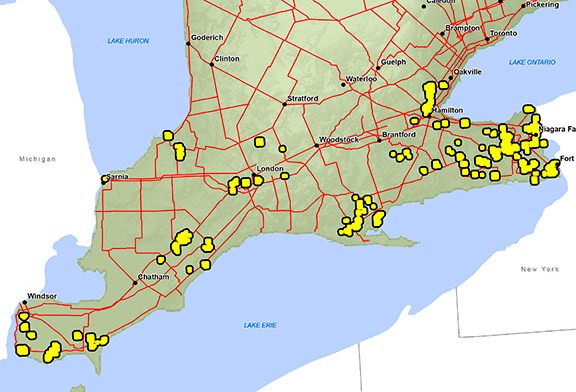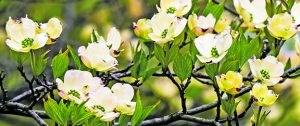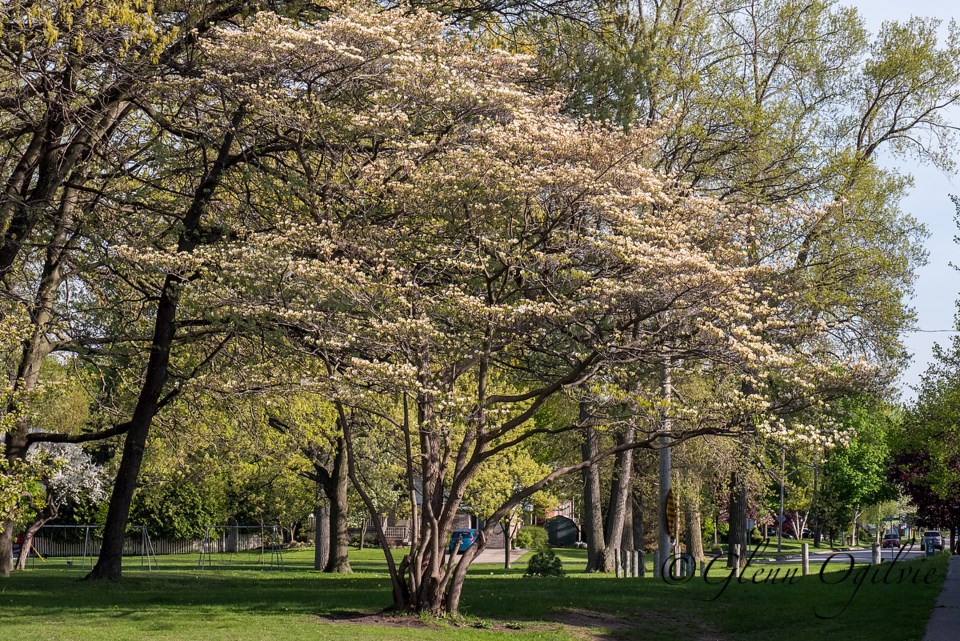Pam Wright
Beside a schoolyard in north Sarnia a majestic eastern flowering dogwood stands alone.
As in ALL alone.
The tree is the last of its species growing wild anywhere the city, the sole survivor of a grove removed years ago to accommodate nearby homes.
Though fairly common in the middle and southern U.S., the flowering dogwood is an endangered species in Canada found only in scattered pockets across southern Ontario.

“Endangered” means it lives in the wild but is facing imminent local or total extinction.
Local naturalist Larry Cornelis said most people wouldn’t give the small tree a second thought. There are, after all, other kinds of dogwood, including shrubs available at the nursery.
But butterflies and moths care deeply. So do the more than 50 species of birds and small mammals known to eat flowering dogwood’s bright red berries.
“This tree has a high ecological value,” Cornelis said.
Sarnia’s lone survivor stands between the staff parking lot and the playground at King George VI School. It’s about 18 feet high with a main trunk 24 inches in circumference.
Aboriginal people used the trees for medicinal purposes and their wood for carving and making tools. It’s also an ornamental spring showstopper that bursts forth in showy white and sometimes pink blooms this time of year.
“Everybody should have a flowering dogwood,” Cornelis said.

Efforts have been made in the pasts by various groups to officially protect Sarnia’s last surviving wild tree, though nothing ever came of it, he said.
“It’s just one of those ideas that never went anywhere.”
Cornelis said native trees are important because each one has unique life that it supports. The big five locally are oak, black cherry, yellow birch, poplars and willows, he said.
“If you plant these five trees, or just helped preserve some, you’ve literally helped about 2,000 species. If you plant a European or Japanese tree, you might help 20 species.”
He cites a University of Delaware study in which researchers filmed a family of chickadees and determined it took 9,000 caterpillars to raise five babies to maturity.
“The point is, only native trees and plants support the caterpillars that support the baby birds.”
